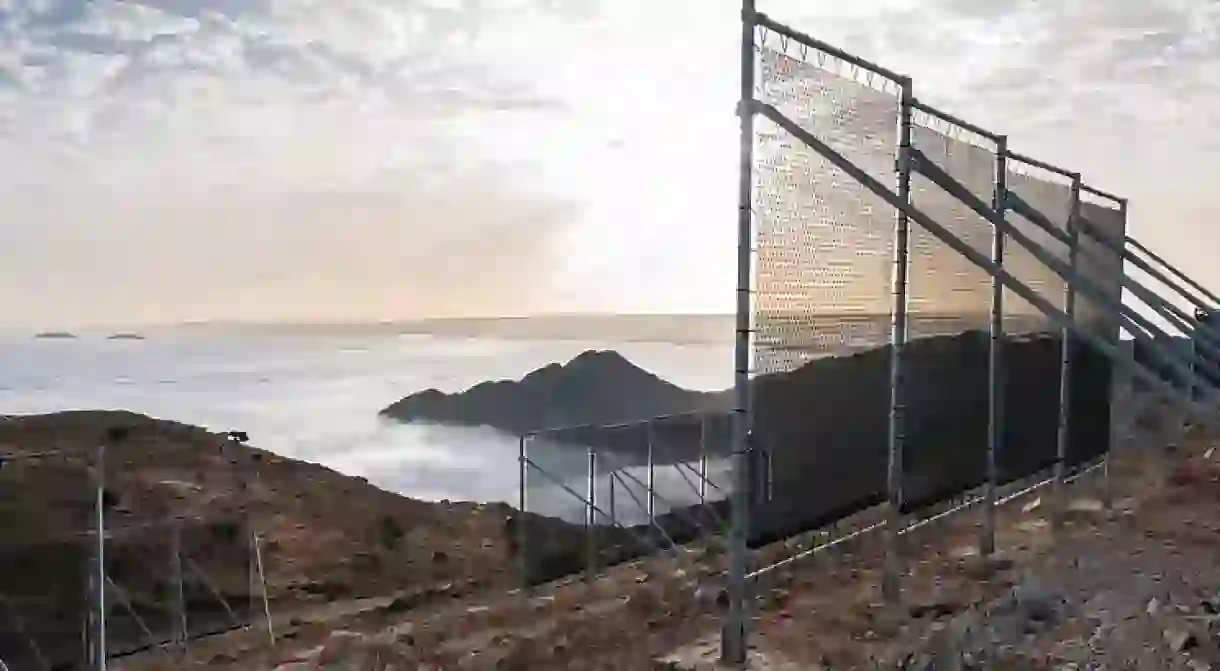Discover the Tech Turning Fog Into Drinking Water in Morocco's Driest Region

On the slopes of Mt. Boutmezguida, in Morocco’s Anti-Atlas mountains, a row of black polymer nets collect dewy droplets from the rolling fog.
Mimicking the way in which a spider’s web naturally collects water drops from mist, wind pushes the fog through the nets, where droplets are trapped, condense, fall, and amass in reservoirs at the base of the unit. From there, the water continues its descent via solar-powered pumps and pipes, finally arriving in households in the coastal town of Sidi Ifni.
Drop by drop, the collection of nets known as the CloudFisher project produce up to 5,000 gallons of water a day – a life-affirming gift for the communities living in Morocco’s Aït Baamrane area, where it rains less than 132mm a year.
The largest functioning fog-harvesting project in the world, CloudFisher ensures that the 800 local inhabitants access a clean water supply of up to 18 litres per day – compared to just 8 litres of disease-prone well water that they relied on before the project’s November 2013 arrival.
While still a modest amount (urban water consumption in Morocco is around 85 litres per day per person), pure fog drinking water doesn’t require treatment, and residents are even able to use excess water to grow a modest amount of fruit and vegetables.
Crucially, CloudFisher also frees girls in the villages from having to fetch the disease-prone water from wells in the valley. Previously required to hand-carry jugs over long distances in high temperatures, girls would often begin their water journeys before sunrise, covering distances of up to 5 km. They then had to take turns filling their containers, waiting between these turns until the depleted water table rose. It is estimated that across Africa, women and girls spend 40 billion hours per year collecting water.
Today, Aït Baamrane’s girls are free to use their time to study at local schools, take training courses in water management, water saving, and optimal use, and help produce Argan oil, one of the region’s most profitable products.
Local studies have shown that the impact of CloudFisher has provoked feelings of empowerment for women and girls, less degradation of the natural environment, and fewer waterborne diseases, especially among children.

While fog harvesting isn’t a solution that can work everywhere, CloudFisher projects are currently underway in the mountainous regions of Yemen, Chile, Mexico, South Africa and northern California.
With almost half of the world’s population facing water shortages – including around two billion people without safe drinking water and over 4.5 billion living without proper sanitation – technology creating sustainable water solutions will become an increasingly vital life-source around the world.
For more inspiring stories about the ways technology is transforming the world for the better, read about Finland’s plan to revolutionise urban transport or the robotic fish documenting and preserving marine life in Fiji.













